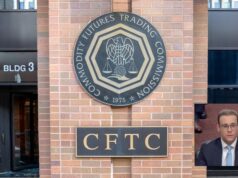The Bank for International Settlements (BIS) has embarked on a pioneering journey to tackle some of the most persistent issues in global finance through Project Agorá. Announced earlier this year, this experiment brings together 41 of the world’s largest financial institutions. The list includes heavyweights like JPMorgan Chase, HSBC, and BNP Paribas, along with seven G7 central banks, such as the U.S. Federal Reserve, Bank of England, and Bank of Japan. The goal? To modernize cross-border payments by integrating tokenized commercial bank deposits and wholesale central bank digital currencies (CBDCs) on a unified ledger.
The Cross-Border Payment Problem
Cross-border payments have long been plagued by inefficiencies. Those range from high costs and slow transaction times to complex compliance checks, repeated at every step of the process. The legacy correspondent banking system, which involves multiple intermediaries, often leads to funds being stuck “in limbo” while banks verify transactions. Moreover, these payments are subject to varying regulatory frameworks, currency exchange rates, and operational hours, further complicating the process.
The BIS recognizes that these frictions are not just an inconvenience; they have serious implications for global trade and remittance flows. Project Agorá seeks to create a seamless, real-time settlement system that eliminates the fragmentation currently hindering cross-border transactions. It introduces tokenization and blockchain technology into the mix to achieve that.
The Unified Ledger Solution
At the heart of Project Agorá is the concept of a unified ledger. Unlike traditional payment systems that separate the messaging layer (the instructions to move money) from the actual transfer of funds, the unified ledger would merge these processes, ensuring that transactions are completed in real-time. This ledger would hold both tokenized commercial bank deposits and wholesale CBDCs, allowing for near-instant atomic settlements across multiple jurisdictions.
The project will leverage smart contracts, automating and enforcing compliance processes, such as Know Your Customer (KYC) and Anti-Money Laundering (AML) checks, reducing delays. Currently, these checks are conducted independently by every bank involved in the transaction chain. This often leads to duplication and extended waiting times.
Potential Benefits of Project Agorá
By integrating blockchain technology, Project Agorá promises to:
- Reduce Costs: Removing intermediaries and automating compliance procedures could slash transaction costs for banks and customers.
- Increase Speed: With tokenized assets and real-time settlement, cross-border transactions that once took days could be completed in seconds.
- Enhance Security and Transparency: Tokenized money, backed by the trust of central banks, would offer a more secure alternative to existing payment methods. The programmable nature of smart contracts would add transparency, ensuring that transactions are executed as intended.
The Challenges Ahead
However, while the potential benefits are compelling, Project Agorá faces significant challenges. Regulatory alignment across jurisdictions remains one of the most daunting hurdles. Each country has its own rules regarding capital movement, data privacy, and AML compliance. Hence, the unified ledger must accommodate these differences without compromising efficiency.
Moreover, there is the question of interoperability. Can Project Agorá’s unified ledger integrate with existing financial systems, or will it require a complete overhaul? Some critics argue that while tokenization is promising, the transition from traditional systems to blockchain-based infrastructure will be complex, costly, and time-consuming.
A Step Toward the Future
Project Agorá’s success is far from guaranteed, but it represents an ambitious attempt to re-engineer the global payments infrastructure. Supported by major commercial and central banks, the project could offer a blueprint for the future of international finance, particularly in regions where current systems are inefficient or underdeveloped. As the project moves into its design and testing phases, it will provide valuable insights into how tokenized assets and CBDCs might coexist to create a more streamlined, accessible, and secure global financial system.
>>> Read more: Saudi Arabia joins mBridge project
For now, the financial world watches closely, awaiting results that could shape the next generation of cross-border payments. Will Project Agorá’s bold vision solve the cross-border payment puzzle? Time will tell, but the foundation for transformation is being laid.
Readers’ frequently asked questions
How does the tokenization of deposits differ from traditional banking systems, and why is it important for Project Agorá?
Tokenization transforms a real-world asset, like a bank deposit, into a digital token on a blockchain or distributed ledger. In traditional banking, cross-border payments involve multiple intermediaries, including correspondent banks, when transferring funds between different national systems. These transfers rely heavily on messaging systems such as SWIFT that separate the movement of funds from the messaging process. This often leads to delays, high transaction costs, and operational risks.
In contrast, tokenized deposits, the key to Project Agorá, allow the asset and its corresponding information to move simultaneously on the same platform. With tokenization, ownership can be transferred instantly. Smart contracts can automate the execution of rules and compliance checks such as Know Your Customer (KYC) and Anti-Money Laundering (AML) procedures. The advantage is clear: faster, more secure transactions without the friction associated with traditional banking. This approach is especially relevant to Project Agorá because it aims to streamline cross-border payments. It will reduce the dependency on intermediaries while enhancing security and transparency.
What is the role of central banks in Project Agorá, and how are they using CBDCs to contribute to its success?
Central banks play a crucial role in Project Agorá by bringing wholesale central bank digital currencies (CBDCs) into the fold. Unlike retail CBDCs, aimed at the public, wholesale CBDCs are designed for institutional use, like large-scale interbank transfers. In Project Agorá, central banks are experimenting with integrating these digital currencies with tokenized commercial bank deposits to facilitate seamless cross-border payments.
Involving central banks ensures that state entities back the project’s digital currencies, providing trust and stability to the system. This contrasts with decentralized cryptocurrencies, which often experience volatility and face regulatory scrutiny. By using wholesale CBDCs, central banks hope to establish a more secure and regulated means of transferring funds between nations. In Project Agorá, these CBDCs work alongside commercial bank deposits to form a unified, blockchain-based system that allows for faster and more transparent cross-border transactions
What are the key regulatory challenges that Project Agorá faces, and how might they impact the project’s implementation?
One of the major hurdles for Project Agorá is regulatory compliance across multiple jurisdictions. Each participating country has its own regulatory framework regarding capital movements, data privacy, and financial integrity controls like KYC and AML requirements. Integrating these various legal frameworks into a single unified ledger system presents significant complexity. For example, some countries have strict capital control laws, while others may prioritize privacy regulations. Balancing these differences in a unified cross-border payment system is no small feat.
Moreover, different time zones, operational hours, and national currencies further complicate the matter. The unified ledger promises real-time settlement and atomic transactions. However, the legal and regulatory environments in each participating country must align for smooth operation. Failure to harmonize these frameworks could slow down the project’s implementation, or worse, lead to jurisdictional bottlenecks that undermine the benefits of the system. As Project Agorá progresses, it will need to work closely with regulators worldwide to ensure that its system is compliant, secure, and legally robust.
What Is In It For You? Action Items You Might Want to Consider
Monitor the Development of Tokenized Assets and CBDCs
As Project Agorá progresses, it could lead to a major shift in how cross-border payments are processed. Traders should stay updated on the integration of tokenized commercial bank deposits and wholesale CBDCs within international banking systems. The success of this project could influence the adoption of blockchain technologies by mainstream financial institutions, making it crucial to adjust strategies around digital assets accordingly. Keep an eye on developments from BIS and its central bank partners, as this could impact both traditional markets and the crypto space.
Watch for Regulatory Signals
Given the regulatory challenges highlighted in the project, any progress on regulatory harmonization across jurisdictions could signal a green light for wider adoption of blockchain-based cross-border payment systems. Traders should pay close attention to news on AML/KYC compliance innovations and updates from key regulatory bodies, as favorable regulatory conditions could drive faster adoption of tokenized assets, potentially impacting liquidity and pricing in related markets.
Explore Opportunities in Blockchain Infrastructure and Payment Networks
Project Agorá underscores the growing focus on blockchain infrastructure and payment networks for institutional-level transactions. For traders, this is a signal to explore investments in blockchain infrastructure providers, especially those involved in smart contract technologies and cross-border payment solutions. As financial institutions increasingly adopt blockchain for high-value transactions, companies involved in this technology could experience increased demand, providing new trading and investment opportunities.










